“I haven’t seen a place with this much fusion….mountains like Scotland’s, ice like Antarctica’s, sunsets like San Diego’s. It’s such an amazing blend of countries and places.” —Derek Nguyen
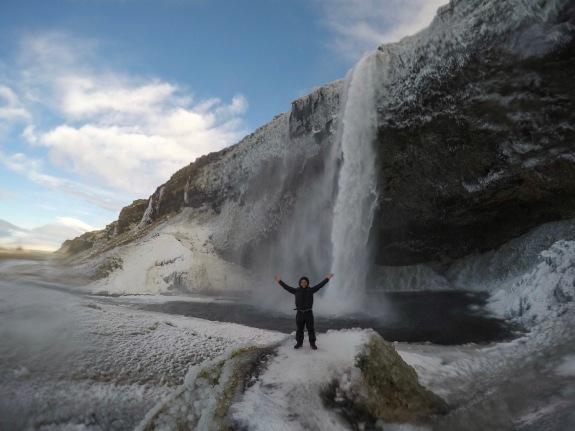
Iceland has recently been blowing up in airports, magazines and advertisements as a must-see travel destination, and understandably so. Waterfalls, volcanoes, glaciers, black sand beaches and hot springs are just a few of the gems scattered throughout this Nordic island, and its beauty transfigures from season to season. For me, it was my ultimate dream destination since the time Instagram came out; every single photo I saw of the landscape was like going back to an era where everything was seen for the first time. Perhaps that’s because, according to an article on vox.com, up until 2011 only around 500,000 tourists were visiting annually, compared to today’s near 1.6 million. And with interest rising and a stream of unbelievable photos increasingly firing across social media, I thought “better sooner than later” on going myself.
So mid-November my good friend and adventure buddy, Derek Nguyen, happily agreed to travel with me for the week, and before long I had a couple more friends tagging along to see what the hype was about. My desire was to be as alone as I could be (minus these friends) in such a wild and rugged atmosphere, to experience solitude amidst some of nature’s most amazing creations. And I believed I’d increase my chances of avoiding a surplus of tourists by going during one of the more unpopular months.
Unpopular maybe because November is a working month for most American visitors (who, according to the same article, now outnumber Iceland’s own population!), but certainly not unpopular for lack of beauty. I can’t speak for Iceland’s summers, but the landscapes I saw in this season were pretty hard to beat.
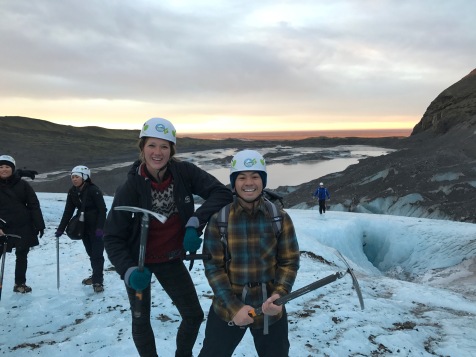
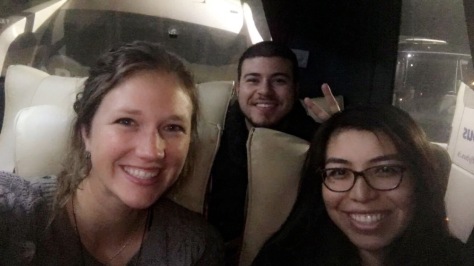
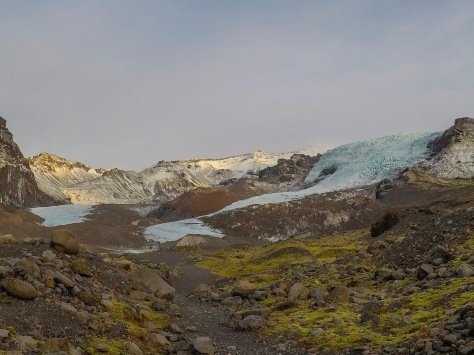
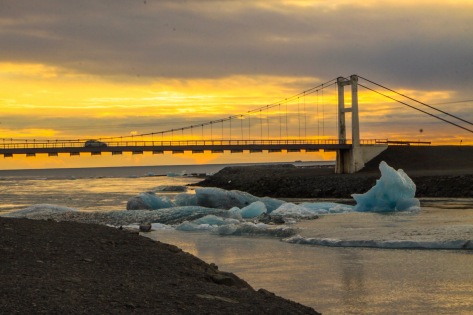
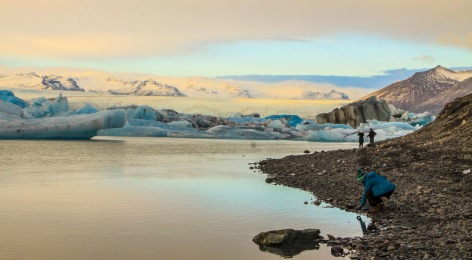
There are a few things that could’ve made the trip even better, had I known, and a few things I’m glad I knew beforehand. One instant regret was not being able to stay longer than a week, since I could’ve stayed in one section of the country for that long and still not have seen everything. But the price of living isn’t very cheap by my standards, and it was about all the time I had.
So my first bit of advice is to plan to stay at least a week and a half, more like two if you want to cover the whole island without rushing through. But don’t feel like you have to see it all, all at once. We only covered the southern half and are excited at the prospect of going back again to see the rest. Next time, though, I’ll be a little more prepared.
Here are some other things to keep in mind:
1. Take heed to the name “ICE LAND” and pack accordingly.
Living in a small mountain town in Colorado, come November you’d think I’d know what cold is. The temperatures for the upcoming week ranged in the high 20s to low 30s—not bad at all! So I packed a couple of heavy cotton sweaters, a few base layers, some fleece pants….and then to save room I took out my obnoxiously large garage-sale wool sweater.
IDIOT. I failed to factor in 80 percent humidity and 40 mph wind gusts that just about froze my eyelids shut.
On the second day I was wearing pretty much everything I had in my suitcase and was still cut to the core. If it weren’t for the wind, which threatened to topple us every time we got out of the car, I don’t think I would have any complaints. But in a tree-barren tundra there was really no escape, and if I was hesitant before on buying $250 worth of wool and fur products for souvenirs, I bought them without hesitation for necessity (and they really helped). Which leads me to a side tip: The 100% wool, nordic-designed sweaters are not just a clique souvenir; they really are quality gifts that will last years, and well, well worth the price. If you want to be even more authentic, you’ll skip the dozens of brand name sweater stores in Reykjavik and hold out for tiny, family-owned markets deeper in the country. The prices tend to be cheaper and most of these sweaters come with a pinned tag telling which lifetime local hand wove the product—proof your gift wasn’t mass produced in a factory.
IN SHORT: Layers, layers, layers. And if you think you’ve packed too many, pack some more.
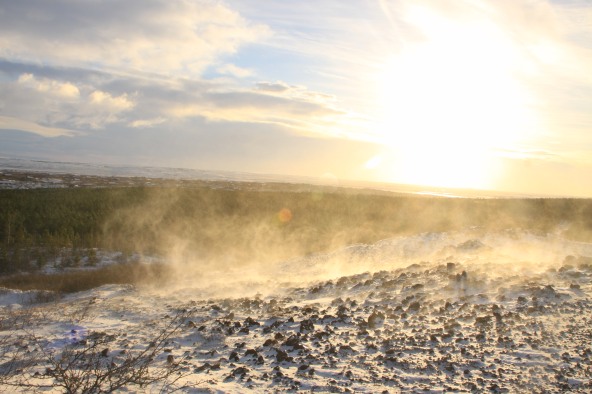
2. If you’re not into photography, get into it.
I think the same could be said for any new place you visit, but when you’re standing in an area with glaciers to your left, beaches to your right, lava fields behind you and northern lights above you…you might be kicking yourself if you have only a phone. Phones can take quality photos nowadays, but even a small point and shoot should give you better range, zoom and stability for breathtaking photos. And an extra camera means you won’t lose any photos opportunities when your phone dies.
If you plan on shooting the northern lights, a phone definitely won’t work, and you’ll need a sturdy tripod for a DSLR.
IN SHORT: If you have a good camera, bring it. If a phone camera is all you have, put it on airplane mode to save the battery.
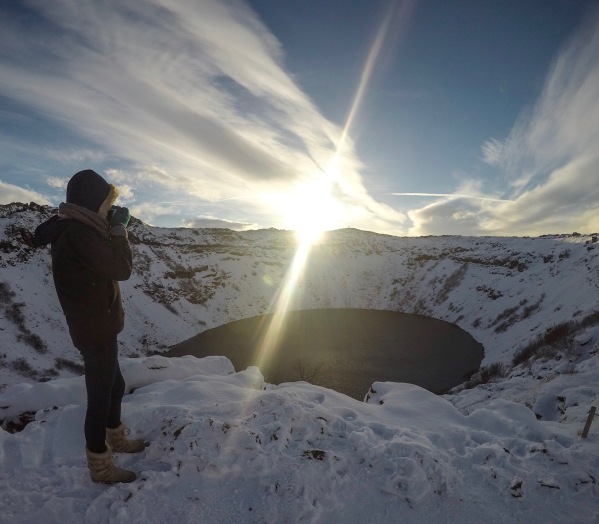
Speaking of northern lights, let’s talk about how
3: The northern lights don’t always look like the northern lights.
A local in a hotel in the middle of nowhere told me that sometimes the aurora, in its beginning or weakening stages, looks like a “gray cartoon cloud” to the human eye. But when you take a photo of said cloud, the camera picks up the gray as green. The reason for this is because cameras don’t have the limitations of rods and cones that our eyes have, particularly at night.
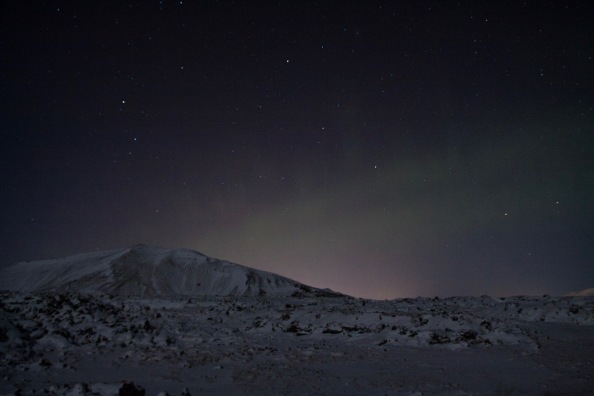
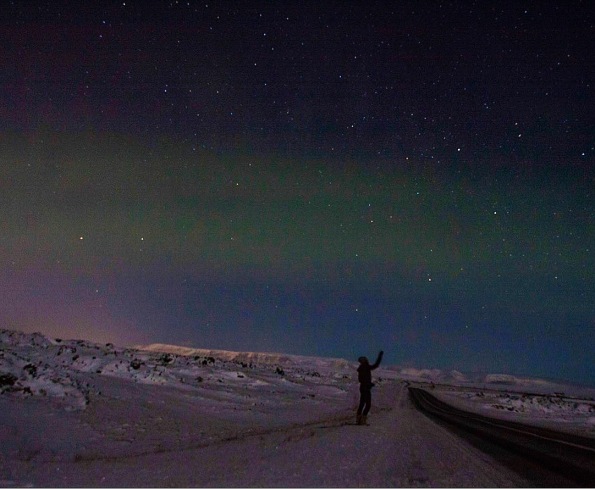
When the aurora becomes stronger and the night darker, however, you’ll no longer need the help of a camera lens to recognize the intense green waves (and sometimes pink, purple and blue).
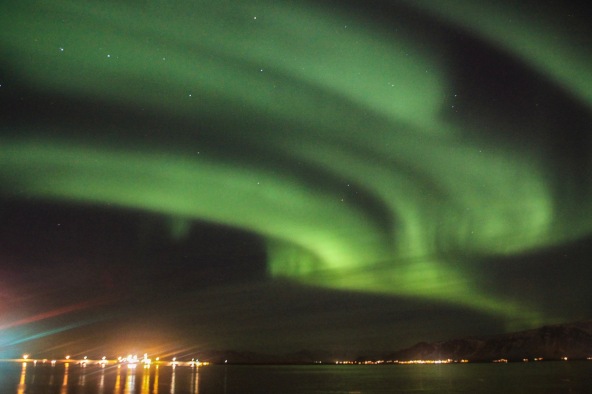
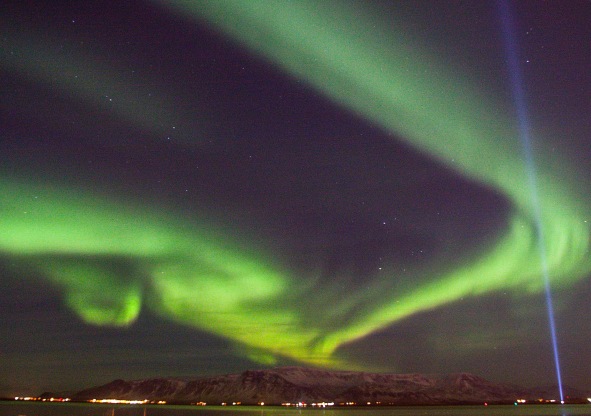
But it’s pretty difficult to actually determine when the lights will show themselves, and where they will be the strongest. On the last day of my seven day trip I downloaded an app to help me track the lights’ estimated path, called Aurora Fcst, but I wish I had done that earlier. From there you can view the strength of the aurora and its projected path and even sign up to receive alerts when the lights are active. There’s a website (Leirvogur Magnetic Observatory) that will show you when the aurora “spikes”, meaning you should get your butt outside, but unless you want to stay up and refresh that page every half hour throughout the night, you’re better sticking to the app.
And like so many websites say, don’t go to Iceland JUST to see the lights. I’ve been studying that app and other websites since visiting and I could tell you I think I see a pattern, but the truth is there really is no pattern to when they show themselves. I do recommend staying at least eight days, if not two weeks, to give yourself a better chance at seeing them; but if a week if all you have, plan ahead of time to go to Iceland for the stunning scenery alone, and you won’t be disappointed.
IN SHORT: Look out for gray streaks—take photos of them if you have a DSLR camera and tripod. And don’t plan your trip around the unpredictable lights.
4. Hostels over hotels.
I know what you’re thinking: After seeing the movie, no way am I staying in a hostel in a foreign country. But if you’ve never stayed in one before, I highly recommend trying it out. One of the most notable advantages to staying in a hostel over a hotel is the price (hotels range anywhere from $65 to $200 a night, while hostels run about $30 a night per bed here, a little more for private rooms). But even more important to me is the chance to meet people from all over the world who often offer tips and/or stories on their travels—whether it be in Iceland or another country you’ll decide to visit next. At one of the hostels in downtown Reykjavik, even the locals will stop by the common area to converse with visitors and give recommendations on the best restaurant you hadn’t heard about, the road with the hidden waterfall that everyone drives past, etc., etc. One of the best parts of the trip was hiking along an unpopulated hot spring stream with stop-offs along the way to take a free dip. This hike, called Hveragerdi, isn’t well advertised and we wouldn’t have known about it had we not been dropped a hint from a local.
Oh, and you can make a ton of friends in hostels. A bonus if someone is from another country and offers accommodations should you ever decide to visit.
IN SHORT: Save money, make friends and become more cultured by staying in hostels.
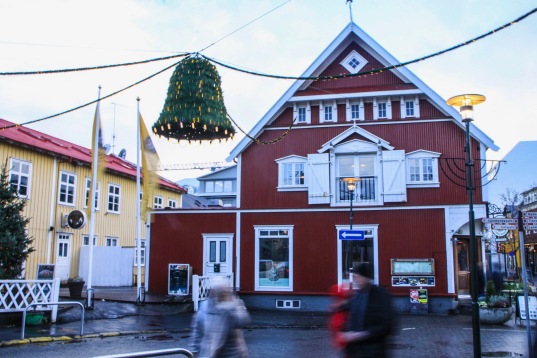
5. DON’T cheap out on car rentals.
There are many reasons why you won’t want to save money by taking tour buses and/or sticking to one place. One, this is a decent sized island, and there are many places that can’t be reached by tours. Or many activities that don’t have transportation provided, like some dogsledding and glacier tour companies. If you have a bucket list of places to see while there, chances are tour buses will only take you to half. Two, if you’re hoping to see the northern lights, you’ll have the best bet at seeing them outside of any cities or towns. There are northern light tours, but unless you want to be on someone else’s clock vying for the same photo amidst dozens of other people (and maybe not even get to see them)…you’ll need a car to get into the countryside. Which leads me to three, a car means freedom. Freedom to go where you want, when you want, to turn around if you just passed by the coolest photo, to backtrack to your favorite restaurant, to stay by the coast watching the sunset for as long as you want. Car and gas prices aren’t cheap, but neither are tours. And I don’t think I could say I truly saw all that Iceland has to offer had I stuck to the cities and buses.
As a side note, snow and wind can make visibility very limited, so get a car with good traction and 4-wheel drive (and if you’re feeling a little off-road adventure, a car that can handle frozen, jagged dirt).
IN SHORT: The drive, freedom and sights are well worth the price of a car rental.
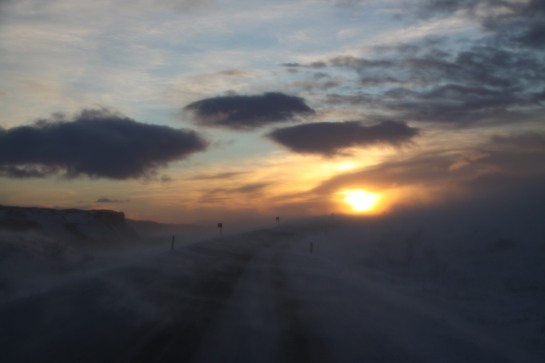
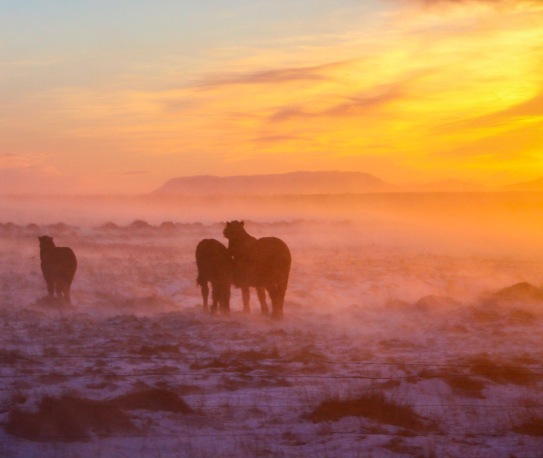
6. DO cheap out on food.
Unless you’re a huge foodie who needs to have authentic, local dishes for every meal, stick to grocery stores: that will be your saving grace for saving money, and more food on the go means more time for sightseeing.
I did try a bite of whale and puffin (which apparently is discouraged because of its high demand from tourists) but even the popular, local food was passable, in my opinion. Don’t get me wrong, it was very good and interesting to taste, but if you really want a delicious, local staple, check out the Fish & More restaurant in downtown Reykjavik. Their dish, Plokkfiskur, was such a knockout that I visited for dinner back-to-back nights. A mixture of locally caught Haddock and Cod in a herb-crusted casserole topped with vegetables, rice, bernaise sauce and a side of house-made sweet Icelandic bread…. YUM.
That was my treat; the rest of the time I was perfectly content with PB&Js.
IN SHORT: Treat yourself to a local dish in restaurants here and there, but buy most of your food from grocery stores to save pocket-fulls of money.
7. Book a Buubble. MONTHS in advance.
The Buubble is more or less a transparent, heated igloo that is made for optimal star-gazing and aurora viewing. Staying in one is actually on my bucket list, but this trip was planned so last minute that there wasn’t a chance we could book one until the next winter. These things run about $270 a night, but based on the reviews and word of mouth, they are worth the experience and sell out quickly. So if you’re planning on visiting Iceland next winter, book one now.
Which leads me to something NOT to do: think you can sleep in that car you rented. In the summer, definitely. But with 40 mph wind beating against your car and the temperature dropping into the teens at night….only if you like not sleeping would I advise this.
I would recommend packing a sleeping bag in your suitcase, if able. Not only will that give you an extra layer when trying to sleep (esp. if you find yourself in a frozen car) but some hostels and guest houses charge extra if you need sheets for the beds.
IN SHORT: Book Buubbles far in advance for an authentic (and comfortable) winter camping experience.
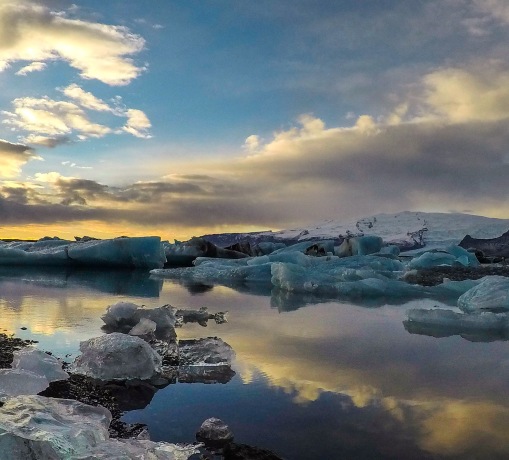
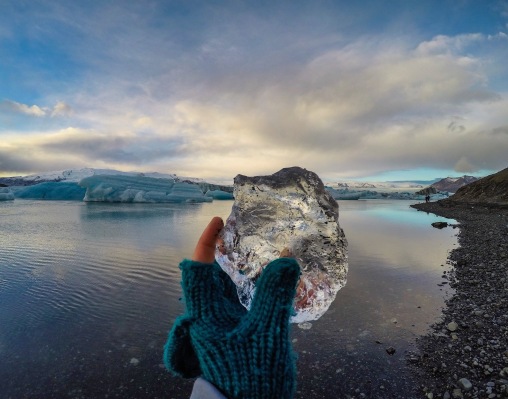
8. If you can only book one tour, book the ice cave tour.
We booked for two excursions during this trip—dogsledding and the glacier hike/ice cave tour. While dogsledding was fun (and adorable) there really wasn’t enough snow in November to be called “sledding.” We were more or less on a wagon, still being pulled but at the mercy of wherever or how fast the dogs felt like going. I will say we learned a lot about the history of dogsledding and the area from our amazing guide, and we got to hang out with the pups before and after the ride. All in all it was a good experience, but probably one I could pass in the future, especially if there’s an opportunity to explore an ice cave.
So our glacial experience started out with the rising sun, and hidden back in a nook behind mountains the wind finally ceased to beat us to death. Now it was all quiet and still, and nothing before us but a massive slide of crystal blue ice. We heard a bit about the history of the glacier, how it changed, how it might change, then strapped on some crampons and stomped our way up a 2,500-year-old ice chunk. Following our guide we then descended down carved out ice stairs into a magical underwater chamber full of frozen bubbles and sunlit glitter.
It really is an adventure you feel more than you can describe, and the caves will always be changing, so you can go back again and again for another once in a lifetime experience. Our guide was awesome, the scenery was beyond words, and we spent the rest of the afternoon at Glacier Lagoon with some newfound friends. Definitely worth the price.
IN SHORT: Ice caving and glacier hiking was freaking awesome. Don’t skip it.
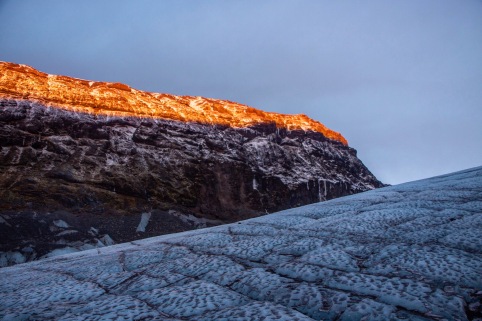

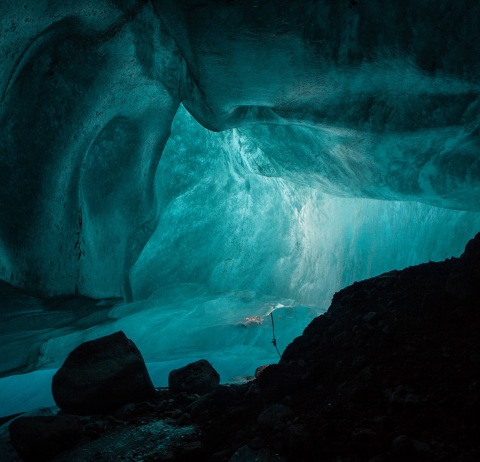
9. Don’t fill your schedule to the brim.
Part of the fun of traveling around a place as beautiful as Iceland is that you could spend an hour or more pulled over on the side of the road just admiring the hour long sunsets, or taking photos of old farmhouses before a backdrop of glacial mountains. Many times we stopped the car because we drove by a sight too beautiful to pass, or found something interesting we hadn’t planned for (like petting the horses). If you make it so that you HAVE to be somewhere all the time, you may really be missing out. This country isn’t rushed; it can be touristy but it’s meant to be truly appreciated in the moment. Not many people realize that the island is always changing due to its geographical nature, so chances are the sights you see will be the last time you see them in that exact way. This was my favorite thing about Iceland—it forced us to slow down, to spend a little more time in each place and to redefine the “must-sees.” There’s a reason the touristy sights are popular, but your own, unique adventure lies in the unexpected and newly discovered.
IN SHORT: Slow down and leave yourself things to do when you go back. Because, trust me, you’ll be going back.
Here’s a quick recap video of our week:
My favorites:
Dogsledding: Dogsledding Iceland
Glacier Climb/Ice Caves: Glacier Guides
Hostels: Loft Hostel (downtown), Reykjavik Hostel Village
Restaurant: Fish & More
Sight: Jökulsárlón (Glacier Lagoon)
Waterfall: Skógafoss
Hike: Hveragerdi Hot Spring River Trail
Northern Lights App: Aurora Fcst
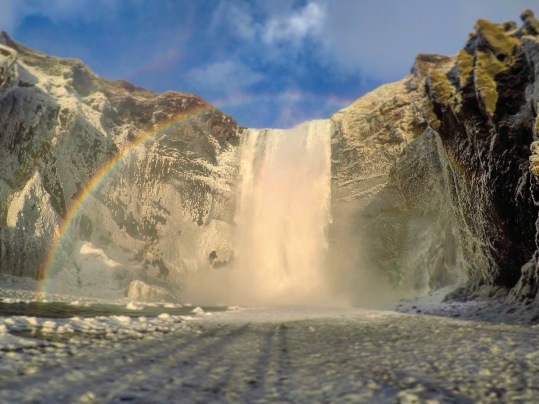
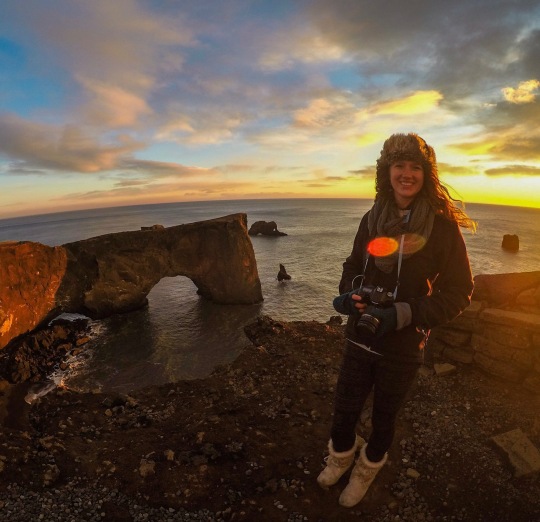
Thanks for the read; keep traveling and venture on!







Hey Love,
Amazing! Absolutely wonderful! You are so inspiring girl. Cannot wait to take your tips and visit Iceland. Perhaps you’ll go again someday?
Thanks for sharing, Jenn!!!
LikeLiked by 1 person
Thank you so much for all your kind words!!! 🙂 they mean so much. I would love to be able to go back again! And I’d love to hear about your adventures when you visit there!! 🙂
LikeLike
WOW Sugar —– WOW!!!! Very proud of you. Nana
LikeLiked by 1 person
Thank you so much Nana!!! Love you so very much 🙂 ❤
LikeLike
This is awesome. Definitely adding it to the bucket list!
LikeLiked by 1 person